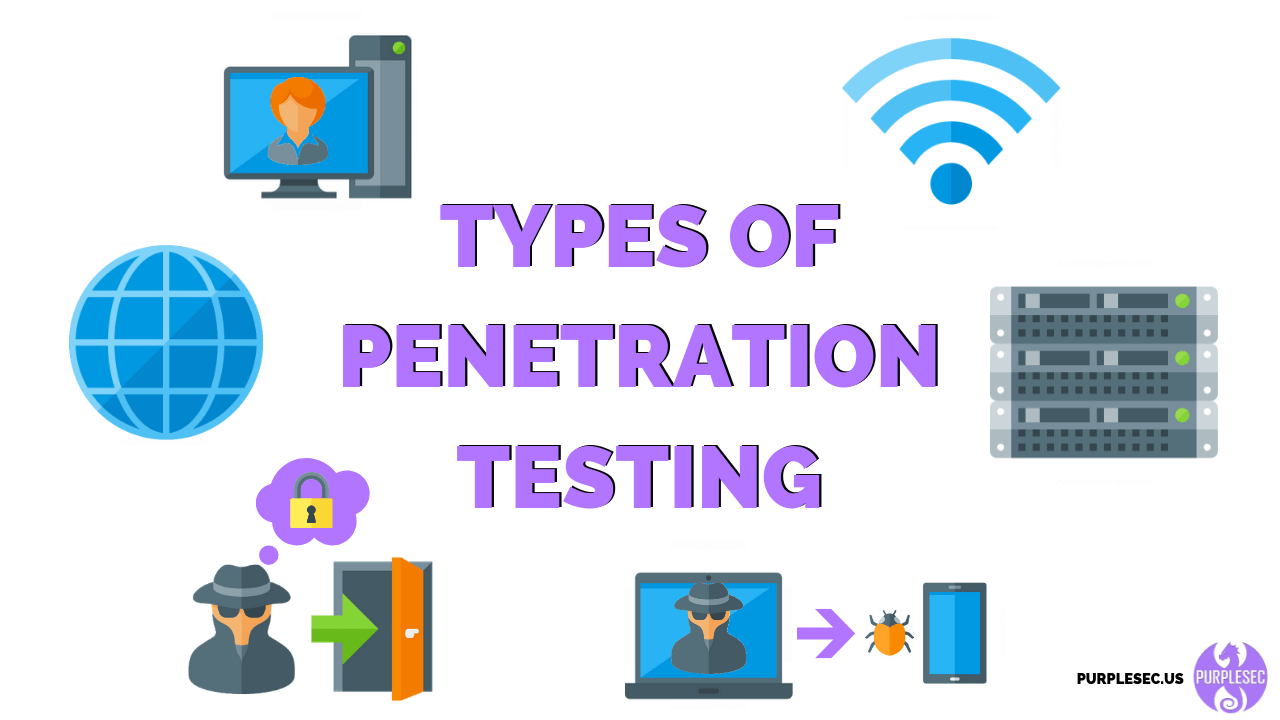Types of Penetration Testing

Penetration testing can take various forms, each focusing on specific aspects of an organization's security infrastructure. Here are some common types of penetration testing:
-
External Network Penetration Testing:
- Simulates an attack from an external source, such as the internet, to identify vulnerabilities in the organization's external-facing network infrastructure, servers, and services.
-
Internal Network Penetration Testing:
- Assesses the security of internal network systems and resources. This type of testing simulates an attack originating from within the organization to identify potential vulnerabilities and weaknesses.
-
Web Application Penetration Testing:
- Focuses on identifying vulnerabilities within web applications, including issues like SQL injection, cross-site scripting (XSS), cross-site request forgery (CSRF), and other security flaws specific to web-based systems.
-
Mobile Application Penetration Testing:
- Evaluates the security of mobile applications on platforms such as iOS and Android. Testers aim to identify vulnerabilities that could be exploited by attackers targeting mobile apps.
-
Wireless Network Penetration Testing:
- Assesses the security of wireless networks, including Wi-Fi. Testers examine the encryption protocols, authentication mechanisms, and overall security of the wireless infrastructure.
-
Social Engineering Testing:
- Focuses on assessing the susceptibility of employees to social engineering attacks. This type of testing may involve phishing simulations, pretexting, and other techniques to exploit human factors in security.
-
Physical Security Testing:
- Involves testing the physical security measures in place, such as access controls, surveillance systems, and the overall security of physical facilities. This type of testing can include attempts to gain unauthorized physical access to sensitive areas.
-
Red Team Testing:
- Red teaming involves simulating a full-scale cyberattack, often without the knowledge of the organization's defenders. The goal is to emulate a real-world adversary and test the organization's detection and response capabilities.
-
Cloud Infrastructure Penetration Testing:
- Focuses on assessing the security of cloud-based infrastructure, services, and configurations. This includes testing the security of cloud platforms such as AWS, Azure, or Google Cloud.
-
IoT (Internet of Things) Penetration Testing:
- Targets IoT devices and the ecosystems in which they operate. Testers evaluate the security of IoT devices, communication protocols, and the overall resilience of IoT systems.
-
VoIP (Voice over Internet Protocol) Penetration Testing:
- Assesses the security of voice communication systems, identifying vulnerabilities in VoIP infrastructure and protocols.
-
Supply Chain Penetration Testing:
- Examines the security of the supply chain by assessing the security of third-party vendors, partners, and interconnected systems.
It's important for organizations to choose the types of penetration testing that align with their specific needs, considering the nature of their infrastructure, the types of data they handle, and the potential threats they face. Regularly conducting a variety of penetration tests helps organizations maintain a proactive and adaptive cybersecurity posture.
Thank you.
